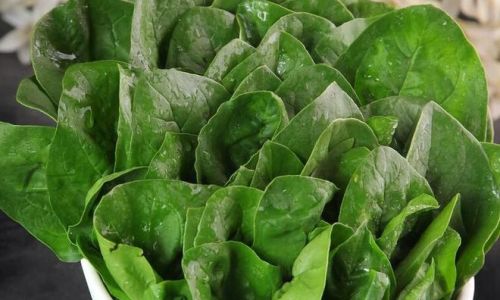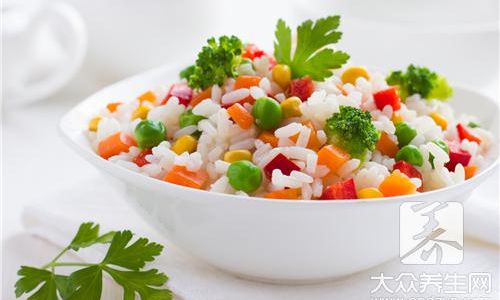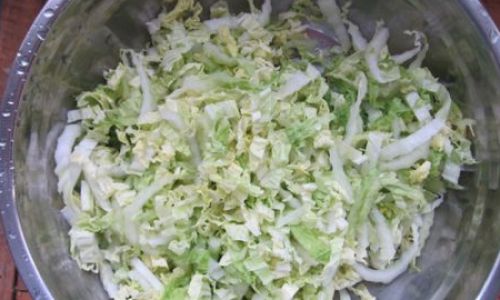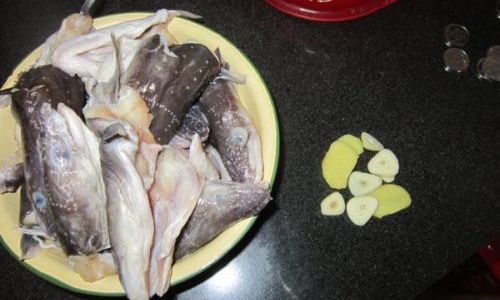Table of content
As winter’s chill fades and the world awakens with vibrant hues, spring offers a bounty of fresh, nutrient-rich ingredients that align perfectly with the body’s natural rhythms. This season of renewal invites a shift in dietary habits, emphasizing light, hydrating, and detoxifying foods that support energy levels, immunity, and overall vitality. Below is a detailed exploration of spring’s most cherished ingredients, their nutritional profiles, and creative ways to incorporate them into daily meals.
The Philosophy of Spring Eating
Spring is a time of transition—both environmentally and physiologically. After months of consuming hearty, calorie-dense winter foods, the body craves lighter fare to shed heaviness and embrace rejuvenation. Traditional medicine systems, such as Ayurveda and Traditional Chinese Medicine (TCM), emphasize seasonal eating to maintain balance. Spring is linked to the liver and gallbladder in TCM, organs responsible for detoxification and digestion. Consequently, ingredients that support liver function, reduce inflammation, and promote circulation take center stage.

Modern nutrition science echoes this wisdom, highlighting the importance of antioxidants, fiber, and hydration during spring. Fresh produce at its peak ripeness offers maximum flavor and nutrients, making it easier to meet daily vitamin and mineral requirements. Below, we delve into the stars of the spring pantry.
Spring Vegetables: Nature’s Detoxifiers
Asparagus
A harbinger of spring, asparagus spears emerge with a grassy sweetness that pairs beautifully with minimal preparation. Rich in folate, vitamin K, and antioxidants like glutathione, asparagus supports liver detoxification and cellular repair. Its diuretic properties also aid in flushing excess fluids, making it ideal for post-winter cleansing.
Preparation Tips: Roast with olive oil, garlic, and lemon zest; toss into frittatas; or blanch and serve with a poached egg.
Peas
Whether shelled fresh from the pod or dried and split, peas are a powerhouse of plant-based protein, fiber, and iron. Their vitamin C content enhances iron absorption, while their low glycemic index stabilizes blood sugar. Spring peas’ delicate flavor shines in salads, soups, or light pasta dishes.
Recipe Idea: Sauté peas with mint, shallots, and a splash of cream for a velvety side dish.
Artichokes
Thistle-like artichokes demand effort but reward with folate, magnesium, and cynarin—a compound that aids digestion and liver health. Their prebiotic fiber nourishes gut microbiota, crucial for immunity and mental clarity.
Cooking Method: Steam whole artichokes and serve with aioli; stuff leaves with breadcrumbs and bake until golden.
Spinach
Tender spring spinach leaves are milder than their winter counterparts, offering a wealth of vitamins A, C, and K, along with iron and calcium. Their nitrate content improves blood flow, while antioxidants combat oxidative stress.
Quick Meal: Wilt spinach with garlic and chili flakes; fold into omelets or use as a pizza topping.
Radishes
Crisp and peppery, radishes provide vitamin C, fiber, and potassium. They stimulate bile production, aiding fat digestion—perfect for countering spring allergies or sluggishness.
Serving Suggestion: Slice thinly into salads; roast with honey and thyme until caramelized.
Fennel
With its anise-like aroma, fennel bulb is a digestive powerhouse. Rich in vitamin C, fiber, and antioxidants like quercetin, it soothes inflammation and supports gut health.
Culinary Use: Shave fennel into slaws; braise with citrus and olives; or roast until tender for a warming side.
Spring Onions
Milder than storage onions, spring onions (scallions) offer vitamins A and K, along with allicin—a compound with antimicrobial properties. Their bright flavor elevates dishes without overpowering.
Tip: Grill whole spring onions until charred; chop and mix into guacamole.
Carrots
Early spring carrots, often harvested young, are sweeter and more tender. Beta-carotene, fiber, and potassium make them excellent for eye health and detoxification.
Creative Dish: Shred carrots into ribbons; toss with tahini dressing and pomegranate seeds.
Beet Greens
Often discarded, beet greens rival spinach in nutrition, packed with iron, calcium, and vitamins A and C. Their bitter edge stimulates digestive enzymes.
Preparation: Sauté beet greens with garlic and bacon; blend into pesto.
Morel Mushrooms
A seasonal delicacy, morels boast immune-boosting selenium and copper. Their meaty texture and earthy flavor elevate risottos or sauces.

Cooking Note: Clean thoroughly; sauté with butter and herbs.
Spring Fruits: Hydration and Antioxidant Boosts
Strawberries
Bursting with vitamin C and antioxidants like anthocyanins, strawberries combat inflammation and support skin health. Their high water content (91%) aids hydration during warmer days.
Sweet Treat: Macerate strawberries with balsamic vinegar; layer with yogurt for a parfait.
Apricots
Juicy apricots provide beta-carotene, fiber, and potassium. Their low glycemic index makes them diabetes-friendly, while their tartness enhances both sweet and savory dishes.
Savory Pairing: Grill apricots and serve with burrata and prosciutto.
Cherries
Sweet cherries are rich in melatonin, aiding sleep, while tart varieties offer anti-inflammatory anthocyanins. All types support joint health and muscle recovery.
Snack Idea: Freeze cherries for a cooling treat; blend into smoothies.
Rhubarb
Though technically a vegetable, rhubarb’s tart stalks are treated as a fruit. High in calcium and vitamin K1, they stimulate digestion when cooked with sweeteners like honey.
Baking Tip: Simmer rhubarb with ginger and orange juice; use as a compote.
Citrus (Grapefruit, Oranges)
Spring citrus varieties like grapefruit offer vitamin C and limonoids, which may reduce cancer risk. Their bright acidity cuts through richness in meals.
Refreshing Drink: Segment grapefruit into sparkling water with mint.
Kiwi
A fuzzy powerhouse, kiwi delivers more vitamin C than oranges, plus actinidin—an enzyme that aids protein digestion.
Quick Breakfast: Blend kiwi with spinach and banana for a green smoothie.
Herbs and Spices: Flavor and Function
Mint
Cooling mint soothes the digestive tract and eases bloating. Its menthol content acts as a mild decongestant, ideal for seasonal allergies.
Culinary Use: Infuse mint into iced tea; garnish soups with fresh leaves.
Cilantro
Love it or hate it, cilantro binds to heavy metals, aiding detoxification. Its coriander seeds add warmth to dishes.
Recipe: Purée cilantro with jalapeños and lime for a vibrant salsa.
Dill
Featuring anti-inflammatory compounds, dill pairs beautifully with fish, eggs, and cucumbers. Its volatile oils ease hiccups and gas.
Serving Suggestion: Toss dill into potato salads; garnish smoked salmon.
Chives
Mild chives add garlic-like flavor without overpowering. Their allicin content supports cardiovascular health.

Tip: Snip chives into scrambled eggs or butter.
Parsley
Often overlooked, parsley is rich in vitamin K and apigenin—a flavonoid that may protect against chronic diseases.
Garnish: Chop parsley into tabbouleh; blend into chimichurri.
Ginger
Warming ginger combats spring chills and nausea. Its gingerol content reduces inflammation and muscle pain.
Beverage: Simmer ginger with lemon and honey for a soothing tea.
Turmeric
Curcumin, turmeric’s active compound, fights inflammation and supports brain health. Pair with black pepper for absorption.
Golden Milk Recipe: Whisk turmeric, coconut milk, and honey; heat gently.
Other Nourishing Ingredients
Sprouts
Alfalfa, broccoli, and radish sprouts are nutrient-dense, offering concentrated vitamins, enzymes, and protein. Their crunch elevates salads and sandwiches.
Growing Tip: Sprout seeds at home for a continuous supply.
Honey
Raw, local honey contains pollen that may reduce seasonal allergies. Its antioxidants and enzymes support immune function.
Usage: Drizzle honey over yogurt; use in marinades for glazing.
Green Tea and Matcha
Catechins in green tea boost metabolism and detoxification. Matcha, a powdered form, provides sustained energy without jitters.
Brewing Guide: Steep green tea at 80°C; whisk matcha into lattes.
Pollen
Bee pollen is rich in B vitamins, amino acids, and antioxidants. Sprinkle over smoothie bowls for an energy boost.
Caution: Avoid if allergic to bees.
Incorporating Spring Ingredients into Your Diet
- Meal Prep: Roast a tray of spring vegetables on Sunday for quick lunches.
- Smoothies: Blend spinach, kiwi, and ginger for a green detox drink.
- Salads: Combine strawberries, fennel, and toasted almonds with a citrus dressing.
- Soups: Purée peas with mint and yogurt for a chilled spring soup.
- Snacks: Dip radishes in hummus or enjoy apricots with almonds.
Conclusion
Spring’s ingredients offer a symphony of flavors and health benefits, from detoxifying greens to immune-boosting fruits. By prioritizing seasonal, whole foods, you align your diet with nature’s rhythm, fostering vitality and resilience. Visit farmers’ markets, experiment with herbs, and savor the fleeting beauty of spring’s bounty—your body will thank you.
As the days lengthen and flowers bloom, let your plate reflect the renewal happening outside. Embrace simplicity, freshness, and the joy of nourishing your body with the earth’s most vibrant offerings. Happy spring eating!





0 comments